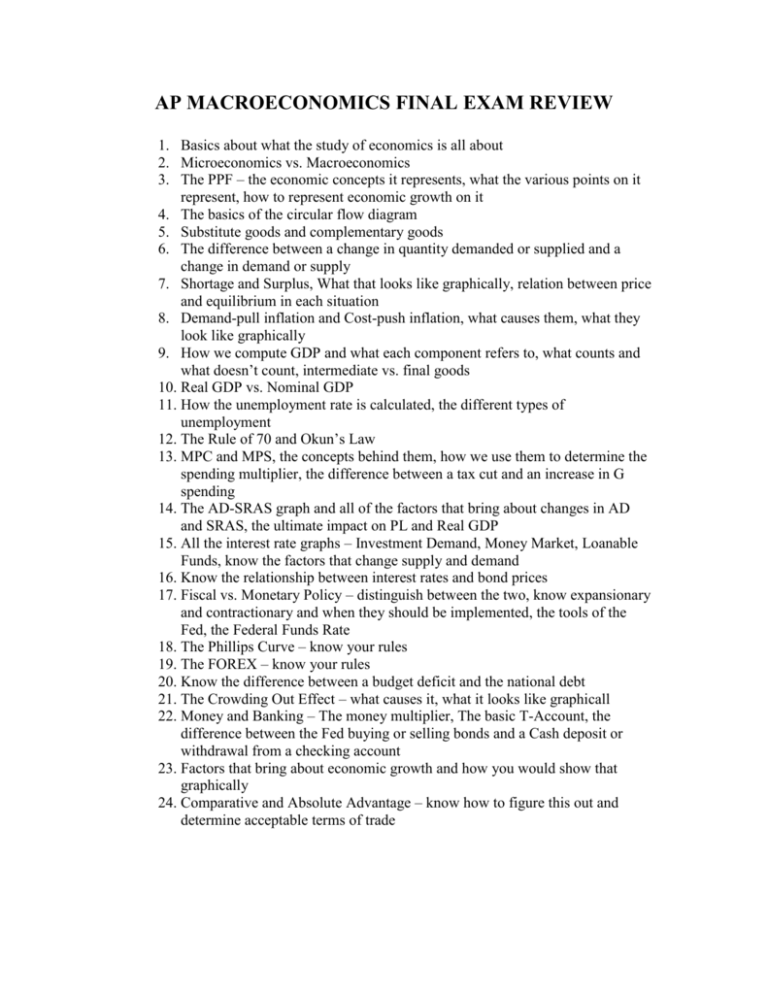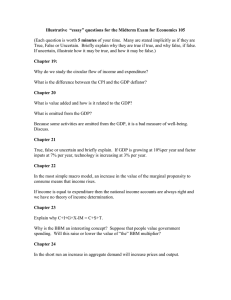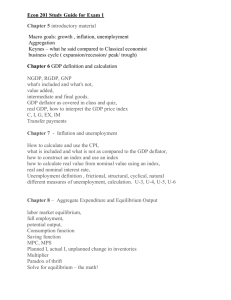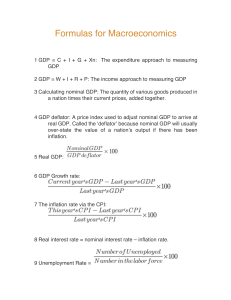AP MACROECONOMICS FINAL EXAM REVIEW
advertisement

AP MACROECONOMICS FINAL EXAM REVIEW 1. Basics about what the study of economics is all about 2. Microeconomics vs. Macroeconomics 3. The PPF – the economic concepts it represents, what the various points on it represent, how to represent economic growth on it 4. The basics of the circular flow diagram 5. Substitute goods and complementary goods 6. The difference between a change in quantity demanded or supplied and a change in demand or supply 7. Shortage and Surplus, What that looks like graphically, relation between price and equilibrium in each situation 8. Demand-pull inflation and Cost-push inflation, what causes them, what they look like graphically 9. How we compute GDP and what each component refers to, what counts and what doesn’t count, intermediate vs. final goods 10. Real GDP vs. Nominal GDP 11. How the unemployment rate is calculated, the different types of unemployment 12. The Rule of 70 and Okun’s Law 13. MPC and MPS, the concepts behind them, how we use them to determine the spending multiplier, the difference between a tax cut and an increase in G spending 14. The AD-SRAS graph and all of the factors that bring about changes in AD and SRAS, the ultimate impact on PL and Real GDP 15. All the interest rate graphs – Investment Demand, Money Market, Loanable Funds, know the factors that change supply and demand 16. Know the relationship between interest rates and bond prices 17. Fiscal vs. Monetary Policy – distinguish between the two, know expansionary and contractionary and when they should be implemented, the tools of the Fed, the Federal Funds Rate 18. The Phillips Curve – know your rules 19. The FOREX – know your rules 20. Know the difference between a budget deficit and the national debt 21. The Crowding Out Effect – what causes it, what it looks like graphicall 22. Money and Banking – The money multiplier, The basic T-Account, the difference between the Fed buying or selling bonds and a Cash deposit or withdrawal from a checking account 23. Factors that bring about economic growth and how you would show that graphically 24. Comparative and Absolute Advantage – know how to figure this out and determine acceptable terms of trade











